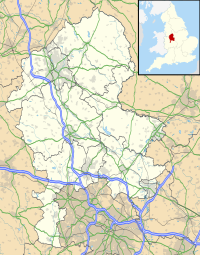| Berryhill Fields | |
|---|---|
 Breaking the Mould, sculpture by Andrew McKeown, installed in 2000. Commissioned by Groundwork UK. | |
| Location | Stoke-on-Trent |
| OS grid | SJ 908 458 |
| Coordinates | 53°00′33″N2°08′25″W / 53.0092°N 2.1402°W |
| Area | 63.31 hectares (156.4 acres) |
| Operated by | Stoke-on-Trent City Council |
| Designation | Local nature reserve |
| Website | Berryhill Fields |
Berryhill Fields is an area of grassland in the heart of Stoke-on-Trent in England, between the housing estates of Bentilee and Berryhill and the town of Fenton. It is a local nature reserve, owned and managed by Stoke-on-Trent City Council. Its area is 63.31 hectares (156.4 acres). [1]
